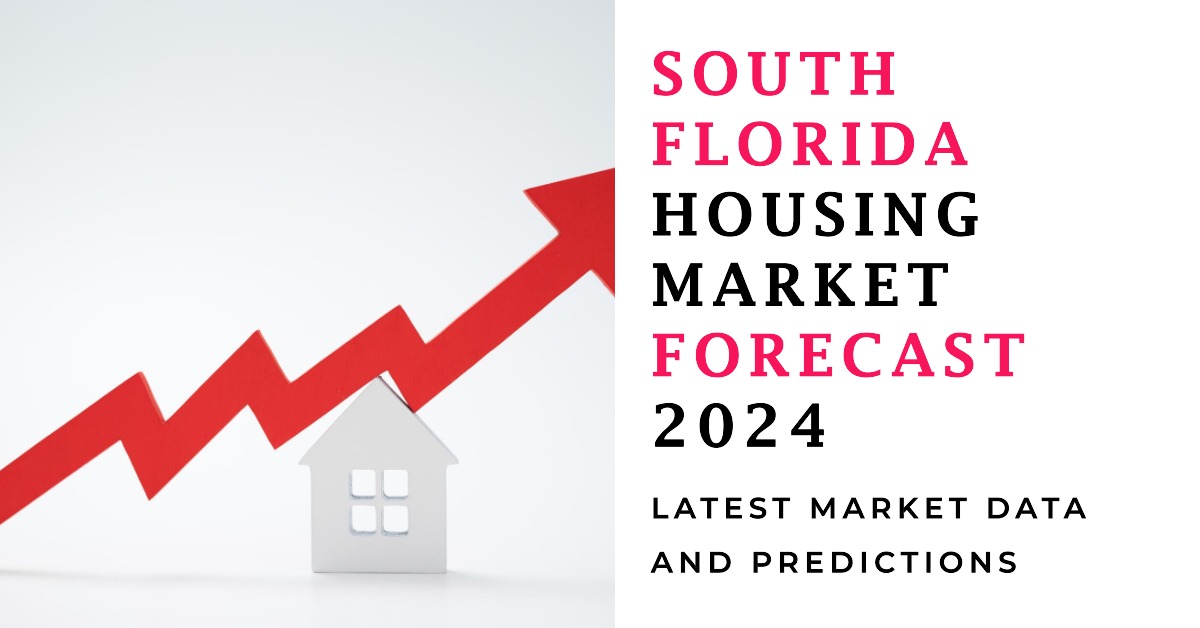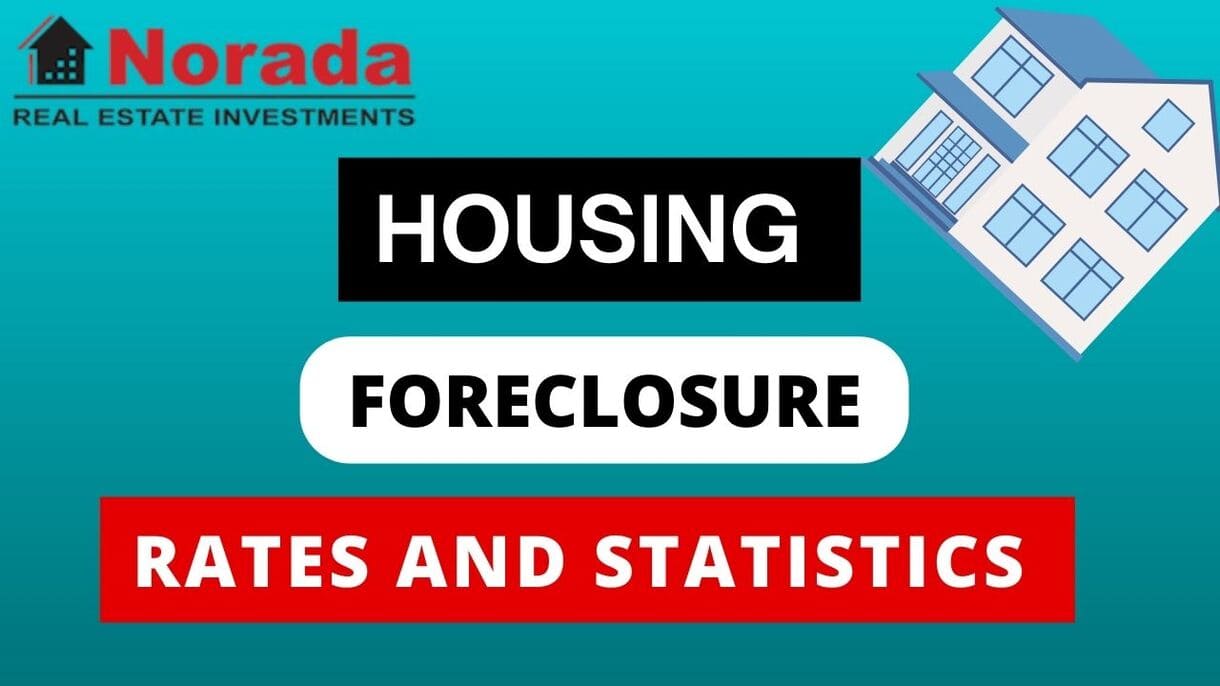The housing market in South Florida is highly competitive, characterized by robust demand, low inventory levels, and appreciating prices. With a steady influx of buyers drawn to the region's strong job growth, attractive lifestyle, and favorable climate, competition for available homes is fierce.
Limited options in desirable neighborhoods coupled with relatively low-interest rates as compared to last year create a challenging environment for prospective buyers. The forecasted growth of home sales in South Florida is +7% year-over-year by the end of 2024 while prices will continue to appreciate at a modest pace of 5%.
How is the South Florida housing market doing currently?
As the seasons change and the real estate landscape continues to shift, investors and homebuyers alike are keen to understand the current state of the South Florida housing market. Let's delve into the latest statistics released by the MIAMI Association of Realtors (MIAMI) and the Multiple Listing Service (MLS) system to gain valuable insights.
Seasonal Spring Market Upswing in South Florida
According to MIAMI Chief Economist Gay Cororaton, the single-family housing market in South Florida is experiencing a healthy upswing as we move into the spring season. Analysis of sales data from 2012 to 2019 reveals that home sales typically ramp up from January and peak in May for most counties in Southeast Florida.
Cororaton highlights that the robust demand and increased home listings are providing a favorable environment for buyers. This surge in listings gives buyers more choices, particularly during this competitive phase of the market.
Wealth Migration and Market Dynamics
One of the notable trends in the South Florida housing market is the incredible wealth migration the region has witnessed in recent years. With a steady influx of individuals from out-of-state and a thriving economy attracting business expansions and relocations, the share of million-dollar homes to total sales has been steadily climbing since 2019.
In 2023, the share of million-dollar homes to total single-family sales rose to 17% (compared to 6% in 2019), while for condos and townhomes, it increased to 9% (up from 5% in 2019).
Migration into Southeast Florida remains strong, with 153,347 driver licenses exchanged for a Florida license in 2023 alone, marking an 8.3% increase from the previous year.
Local Economic Impact in the South Florida's Housing Market
The impact of real estate transactions extends beyond individual buyers and sellers, significantly influencing the local economy. With every home sale, there is a ripple effect, generating income for various industries, stimulating expenditures related to home purchases, and fueling new construction.
In February 2024, Miami-Dade saw 1,705 homes sold, resulting in a local economic impact of $208 million. The total dollar volume of real estate transactions in Miami reached $1.47 billion during the same period.
Market Trends and Performance
Despite certain challenges, the South Florida housing market continues to demonstrate resilience and growth. Miami-Dade's total home sales increased by 0.8% year-over-year in February 2024, with single-family home sales experiencing a 5.1% increase while existing condo sales saw a slight 2.5% decrease.
However, within the condo market, there has been a surge in mid-market condo sales, particularly in the $400,000 to $600,000 price range, which witnessed a 16.4% year-over-year increase.
New Listings and Inventory
One of the encouraging signs for prospective buyers is the increase in new listings, providing them with more options to explore. Miami has seen a steady rise in new listings over the past six months, nearing pre-pandemic levels.
In February 2024, Miami's total new listings increased by 25.87% year-over-year, contributing to a more diverse inventory. Although new listings are up compared to recent years, they still remain slightly below the levels seen before the pandemic.
It's evident that despite challenges, the region continues to attract buyers and investors alike. With favorable market conditions, increased inventory, and a thriving economy, South Florida remains a compelling destination for those seeking to invest in real estate.
Is South Florida Buyer's or Seller's Market?
To assess whether now is an ideal time to buy a house in South Florida, it's essential to understand whether the market is tilted in favor of buyers or sellers. Despite certain fluctuations and challenges, several indicators suggest that it's currently a seller's market.
Here are some key points to consider:
- Robust Demand: There is a consistent demand for homes in South Florida, fueled by factors such as strong job growth, population influx, and the region's appealing lifestyle.
- Low Inventory: The supply of available homes, particularly in desirable neighborhoods, remains relatively low compared to the demand, creating a competitive environment among buyers.
- Appreciating Prices: Home prices in South Florida have been appreciating steadily, reflecting the market's strength and desirability. This trend suggests that delaying a purchase could lead to higher costs in the future.
- Interest Rates: While interest rates have risen slightly in recent times, they still remain relatively low compared to historical averages. However, waiting too long to buy could mean facing higher borrowing costs if rates continue to rise.
Considering these factors, prospective buyers may find themselves facing stiff competition and limited options in the current South Florida housing market. However, this doesn't necessarily mean that it's a bad time to buy.
While it may be challenging to navigate the market as a buyer, those who are well-prepared, financially secure, and ready to act swiftly may still find opportunities to secure their dream home at a reasonable price.
South Florida Housing Market Forecast for 2024
Price appreciation has been a constant in South Florida, with median prices steadily increasing. The influx of wealth migration has significantly contributed to the region's economic growth, boosting household incomes and strengthening the real estate market.
Forecast
As we look ahead to 2024, several key trends are expected to shape the South Florida housing market:
- Continued Resilience: The market is likely to remain resilient, with high-value transactions and cash buyers driving growth.
- Divergence in Sales: Single-family home sales may continue to outpace condo sales, influenced by inventory constraints and mortgage rates.
- New Listings and Inventory: The rise in new listings will provide buyers with more options, but inventory challenges may persist.
- Market Attractiveness: South Florida's appeal to domestic and international buyers is expected to endure, further fueling the market.
- Price Appreciation: Home prices are likely to continue their upward trajectory, particularly in the luxury segment.
- Wealth Migration: The influx of affluent households into South Florida will contribute to economic growth and real estate demand.
While the South Florida housing market faces challenges, it remains a dynamic and attractive destination for real estate investment. The region's ability to adapt and thrive, even in the face of rising mortgage rates, positions it as a promising market for 2024.
If mortgage rates continue to rise next year, affordability will deteriorate. While we believe the South Florida market will remain strong in 2024 and do not anticipate a meltdown, waiting until there is even more inventory and loan rates are much higher would merely prolong the sales process. And we believe that by the end of the year, the days on the market will have increased significantly.
It will take far longer to sell a property than people have become accustomed to in the previous two years. This is an excellent opportunity to be both a buyer and a seller. If you've been sitting on the sidelines, now is the moment to act. The demand for real estate in South Florida is being driven by new residents and corporate relocations from high-tax metropolitan regions such as New York.
While rising home prices may be terrible news for many homeowners, it's good news for rental property investors, helping to explain why rental growth and demand in South Florida are so high. South Florida has around 100 cities and villages, including Miami, Fort Lauderdale, West Palm Beach, Boca Raton, Boynton Beach, and North Miami.
South Florida, sometimes known as the Greater Miami Area, is the seventh-largest metropolitan area in the United States and the second-largest in the southeastern United States, trailing only the Washington-Arlington-Alexandria MSA. More than 6.7 million people live in the region, which encompasses more than 6,000 square miles and three counties: Miami-Dade, Broward, and Palm Beach.
It is important to note that the housing market is influenced by various factors, including economic conditions, government policies, and global events. Therefore, this forecast is subject to change based on future developments. Monitoring the market closely and adapting strategies accordingly will be essential for buyers, sellers, and industry professionals operating in the South Florida housing market.
Will the South Florida Housing Market Crash?
The housing market in South Florida is still strong and unlikely to crash in 2024. Several factors drive housing demand in South Florida:
Climate: South Florida has a warm, tropical climate that attracts many retirees and snowbirds, who are looking for a place to escape the cold weather during the winter months. This demand for seasonal housing helps to drive up housing prices in the region.
Tourism: South Florida is home to many popular tourist destinations such as Miami, Fort Lauderdale, and West Palm Beach. The steady flow of tourists in the area helps to boost the economy and creates a demand for both short-term and long-term rental properties.
Job Market: South Florida has a diverse economy, anchored by industries such as finance, healthcare, and real estate. The strong job market in the region helps to attract new residents and supports the demand for housing.
International Buyers: South Florida is a popular destination for international buyers, particularly those from Latin America and Europe. The strong demand from these buyers helps to drive up housing prices in the region.
Demographics: South Florida's population is growing and is expected to continue to grow in the future, which is a driver for housing demand. Additionally, the increasing population of retirees in the area is also driving demand for housing.
Bottom line: We're not seeing any major home price decline or crash in the South Florida housing market just yet. The current supply of homes in South Florida still favors sellers. In the long run, it is hoped that higher interest rates will result in more days on the market (which gives buyers more choices). The price rise will ultimately slow as a result of higher interest rates. With the deceleration of price rise, total inventory might expand in the future. Historically, inventory grows six months after interest rates rise, but today’s market is unlike any other.
Sources:
- https://www.floridarealtors.org/tools-research/reports/florida-market-reports
- https://www.miamirealtors.com/category/news-releases/
- https://www.miamirealtors.com/news/south-florida-market-stats/




